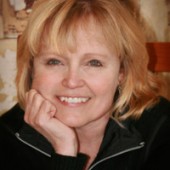Most caterers start out pretty simple with one line of business, whether it is baking for wholesale accounts or doing on-site events. This simple model starts from a small kitchen you think you will never outgrow. If you start to feel cramped, you figure you will go to two or three shifts per day and it will not be a problem.
But then success steps in and before you know it you have multiple revenue streams that require more kitchen space than you planned. For the sake of example, imagine your revenue streams include a contract as the exclusive caterer for a museum that stipulates you must operate a small café in the museum. In addition, you have your events catering, and you are selling one of your famous jams plus homemade desserts to various wholesale accounts.
As you juggle where to make all this food, a local baker goes out of business, and you think the kitchen and equipment are the perfect place where you can produce all of your jams and desserts. While still operating your catering kitchen, you decide to produce all of your museum café food from the café kitchen. The plan is to keep everything separate.
Halt!
Let me stop you right there! All these revenue streams are part of one business and you need to maximize the overhead of one kitchen to maximize company profits. How do you do that? You operate a commissary kitchen. If a person is a “commissary,” they are the point person for a certain project. A commissary kitchen is the point, the center, the hub, that keeps the main wheels turning and maximizes efficiencies in a food business.

Here’s an example: Let’s assume you sell your famous Dulce de Leche Brownies for catered events, to wholesale accounts, in a tiny kiosk to retail customers, and it’s the number one seller on your café dessert menu. In this scenario, the brownie is being made at all three of your kitchen locations. You can see the inefficiency when you examine the activities associated with providing the brownies to your customers:
• Employing and training three bakers plus various other employees at the three locations
• Purchasing equipment, mixers, baking pans and ovens at all three locations
• Paying for your lease, electricity, water, insurance, etc., at three locations
• Hiring a driver or drivers to go between the three locations to pick up brownies for your events/accounts
• Transferring a stock of brownies from the bakery kitchen to the catering kitchen so your catering staff can provide brownies to your wholesale accounts when an employee is out unexpectedly for a few days (it happens!)
• Running out of brownies during the mid-lunch rush at the café on Friday and then having to race across town to get some more from the bakery freezer
• And the “profit leak” goes on and on and on…
Wow! Those are some expensive brownies! It’s a good thing they are your best seller and bring in so much profit. But imagine if you could make them more profitable.

Enter the commissary kitchen
That is where the commissary kitchen comes in. This is one large kitchen that can produce all the food for all of your locations and events. You can still use the small café kitchen for making salads and fruit offerings but everything else, the baked goods, the grilled meats, the homemade rolls, the handcrafted granola, all of it is produced in the commissary kitchen.
You have one lease, one utility bill, one bill for Internet service, one bill for pest control, one baker, fewer dishwashers, plus less than half the management team and drivers that you previously employed for all your locations. You save on van expenses and repairs, plus your deliveries have a higher “on time delivery record.” Why? There’s backup of everything, employees are cross trained, you have more depth of inventory and a par level that you can stay on top of more accurately for all your weekly food purchases. Plus, you have cheaper insurance premiums because there are fewer locations with less equipment.
I guarantee you that you will have a lower food cost and a better cost of goods sold percentage because it’s all in one location. If you manage it correctly, your profits should be at least three points better. Three points of what? I’m talking three percent of your gross sales. Now that’s a savings.
How do I know all these things? Because my company had several locations that made the same items in three locations. I had the driver that sped across the city to pick up a pan of lemon bars, not once but many times. I paid too much for staff, too much for in-company deliveries, too much for extra inventory, too much, too much, too much, and I did it over and over again.
---
“For the past three years we have had a commissary kitchen that has consolidated many of these costs and the company’s net profits have soared.”
---
For the past three years we have had a commissary kitchen that has consolidated many of these costs and the company’s net profits have soared. I would never go back to where we were before our commissary kitchen. It’s been a game-changer, a company-changer, not to mention a personal life-changer for me, the CEO of a catering company with multiple revenue streams.
What’s the negative of a commissary kitchen? From a business profit perspective, I really can’t think of one. Since you’re in the business of profits, not sales, I urge you to consider a commissary kitchen for your various revenue streams.
 Sandy Korem is the owner of the Dallas-based catering company, The Festive Kitchen, which operates multiple food divisions, catering, food manufacturing and gourmet food shops. Sandy and The Festive Kitchen have received numerous awards, including “The White House Food Service Medallion” for outstanding service to a sitting president. She is a frequent speaker at national restaurant shows, a contributor to several national food publications and coaches restaurant owners and caterers on developing a profitable catering revenue stream. For more information about Sandy, visit www.thecateringcoach.com.
Sandy Korem is the owner of the Dallas-based catering company, The Festive Kitchen, which operates multiple food divisions, catering, food manufacturing and gourmet food shops. Sandy and The Festive Kitchen have received numerous awards, including “The White House Food Service Medallion” for outstanding service to a sitting president. She is a frequent speaker at national restaurant shows, a contributor to several national food publications and coaches restaurant owners and caterers on developing a profitable catering revenue stream. For more information about Sandy, visit www.thecateringcoach.com.
Want to learn about new revenue streams and other cost-saving business ideas? Registration for Catersource 2018 is now open! Click here for more information or to register!




